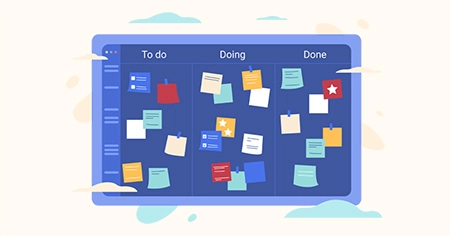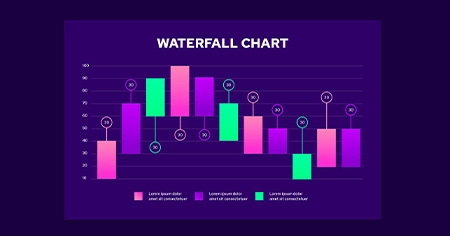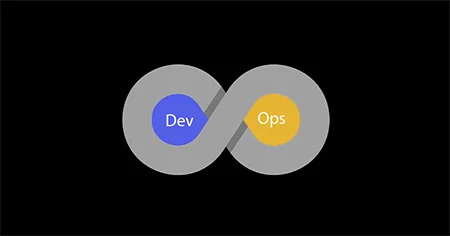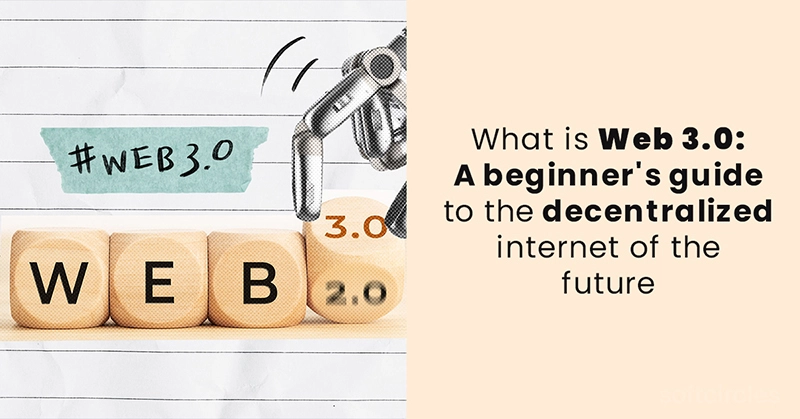Selecting the best development methodologies is difficult because no single methodology is suitable for all applications. In addition, every developer has a different process, which is why some developers may prefer one methodology over another.
As a result, it delivered the new SBP release to the system integration and testing team on time. In addition, Cisco's defect removal efficiency increased by 14% due to their collaboration, and defects were reduced by 40%.
In this article, let us assist you in selecting the best software development methodologies by describing their benefits, drawbacks, and phases.
What is a software development methodology?
A software development methodology is a collection of rules and practices that govern the entire software development process. A methodology provides the team with a concrete algorithm that aids in the management of each process that occurs during development.

There are numerous software development methodologies, each with advantages and disadvantages and addressing different challenges and goals. Your choice of software development methodology will be influenced by factors such as:
- Size and structure of the team
- Technologies
- Size of the project
- Business objectives
- Software prerequisites
Some top common methodologies used in software development
- Agile Software Development
This novel software development methodology is based on evolutionary development, adaptability to change, and continuous improvement through adaptive planning.
Agile development produces software solutions in shorter periods, known as "iterations." Each iteration can last anywhere from one week to one month.

Pros
- Flexibility. Following each iteration, business owners can prioritize different features based on their current business needs, user feedback, or market changes.
- Agile teams can monitor the development process's velocity after delivering each increment.
- Speed. Many processes occur concurrently, saving time for development while improving code quality.
- Quality. Finding and fixing problems is easier when small code sections are tested.
Cons
- Agile divides large amounts of data into smaller user stories, making it difficult for developers to comprehend the precise customer requirements.
- The lack of a documented plan confounds developers as they work through the various stages of a project.
- Lean development
The central concept of lean development is to eliminate anything unnecessary or redundant, from functionality and repetitive tasks to communication. The primary responsibility of developers in the lean approach is to identify bottlenecks that will impede the process. Developers must consider all factors before collaborating and communicating with other team members.

Pros
- Cost savings. The development cost is lower because developers focus only on what is truly important and cut everything else.
- Speed. Because of the increased focus on what is important, the work speed increases.
- ⦁ There is no squandering. Because there is no redundant code or unnecessary documentation, the project is simple to maintain in the future.
Cons
- Specialists with specialized knowledge are required. However, the lean method's decision-driven process necessitates expert developers, making it more difficult to form such a team.
- Documentation. Because the lean approach necessitates extensive documentation, you'll need to hire a skilled business analyst.
- Scrum Software Development
A scrum is a multifaceted approach that can be applied to any software project. However, it is best suited for project development with rapidly changing requirements.
It starts with a brief planning session, then moves on to daily hold meetings - or rucks - to evaluate the progress, and ends with a result. This rapid Software Development methodology comprises multiple work iterations - or sprints - required to complete the product.
Its biggest advantage over other processes is that it can easily get even the slowest-moving projects back on track. Scrum software development is intended for teams of three to nine people who can finish the project in two weeks.
Development teams, who work at their own pace, make all decisions. Business requirements documentation is not critical to project success.
Pros
- The method is adaptable to frequent changes and updates and speeds up the development process
- Individual productivity is measured in daily meetings, which leads to increased productivity among team members.
Cons
- Large projects are not recommended.
- Requires an experienced team with a diverse skill set that collaborates closely. Requires extensive planning due to the project's division into sprints.
- Waterfall Software Development
Waterfall is a traditional methodology that is opposed to Agile. It is based on gradual processes that adhere to a predetermined plan established at the start of the project. It was the first methodology and is still used in some projects today.

Because a waterfall structure does not suggest any unexpected changes, it is simple to follow for less experienced teams. However, this makes it too rigid for projects with changing needs.
Pros
- Structure. The development process is very clear and simple, making it simple for inexperienced developers to grasp.
- Helpful in avoiding unforeseen costs and time lapses
- Agendas for sprint meetings that are clear and well-defined
- Allows teams to test products before release to identify potential flaws.
- Changes are easily accommodated and integrated into the next sprint.
Cons
- Because there is no set end date, it leads to scope creep.
- If individuals are not cooperative, there is a high risk of project failure.
- Adoption is difficult and can only be successful with experienced team members.
- It isn't easy to scale up and requires extensive training.
- Significant organizational transformations are required.
- Prototype Model
The Prototype model, rather than designing the whole software, allows designers to work on prototype model versions of the result. The prototype is then used to collect customer feedback using the best customer feedback tools which aids in the improvement of product quality.

Because of the constant feedback loop from customers, the project goes through many prototype iterations before settling on the final version, which the customer accepts. The prototype model is popular because it allows for the evaluation and implementation of product ideas before the start of actual development.
Pros
- Suitable for detecting problems before development begins.
- Allows teams to ensure that the visitors are satisfied with the product concept before beginning development.
- Encourages detailed information
Cons
- In some cases, a large number of prototypes and continuous testing delay the project timeline.
- Rapid application development
It is an Agile method that also employs an iterative approach. Its primary goal is to strike a balance between quality and development speed.
The four main steps in RAD are planning, prototyping, testing, and implementation. In contrast to the Agile framework, RAD focuses on prototyping and testing each feature with customers. This allows developers to ensure that their products are exactly what future users expect. Iterative testing occurs and ends when the user is satisfied with the product.
Pros
- Reduces the likelihood of poor execution due to continuous client feedback and early detection of issues
- Users interact with prototypes, resulting in a higher-quality product.
- Rapid development as a result of less planning and documentation
- Increased success rate. Developers can use feedback to ensure their product does not miss the market.
Cons
- Due to modeling and automated code generation costs, it is not suitable for low-budget projects.
- Because of the fast-paced nature of this method, an experienced team that has been working together for a long time is required.
- Documentation is lacking. It cannot be easy to keep up with changing requirements and write detailed documentation, just as it is with Agile.
- Feature Driven Development
This software development methodology is ideal for large teams working on project-oriented or object-oriented technology and organizations transitioning from stage-based to iterative approaches.
Feature-driven development is a practice and methodology that incorporates several software development practices and methodologies into a unifying framework and technique. Its primary goal is to organize software development around its features and deliver working products quickly.
Pros
- Assists in the successful completion of large projects.
- Its five simple processes provide structure and a good overview of the project: model development, feature list building, planning, design, and build by feature.
- Built on established software development standards and employing industry-recognized best practices, the method is simple for developers to grasp.
Cons
- Due to the complexity, it is not suitable for smaller projects or teams.
- Because they bear a great deal of responsibility, lead developers must be well-trained and well-equipped.
- This highly complex process must be monitored at each stage to avoid major issues.
- The Dynamic systems model
This strategy is similar to rapid application development. It also has four stages, which are as follows:
- Feasibility and business analysis
- Model of functionality
- Create and construct
- Implementation
The Dynamic systems model devotes significant time to prototyping, testing, and gathering user feedback. Developers can deliver core functionality quickly by dividing the entire development life cycle into iterative stages.
Pros
- Quick delivery. This model enables developers to deliver features quickly due to its iterative approach.
- Concentrate on business objectives. Documentation. User feedback ensures that functionality is developed with business requirements in mind.
- Unlike other Agile methodologies, Dynamic systems emphasize maintaining clear and detailed documentation.
Cons
- Implementation is difficult. Because of its complex processes, this methodology is difficult to implement.
- Size of the team. A small team will struggle to keep up with the processes involved in analyzing business requirements, gathering feedback, and writing documentation.
- High price. The cost of involving both developers and users can be quite high.
- DevOps
DevOps has been a popular term in the IT industry since the movement gained traction in 2007 and 2008. DevOps is a collection of advanced tools, practices, and process automation philosophies to integrate IT operations and software development.

Furthermore, DevOps provides a foundation for rapidly developing, testing, and releasing software. As a result, it ensures better results and allows for continuous product delivery.
Pros
- Automates repetitive tasks to allow for faster innovation.
- Improves product quality while stabilizing the work environment
- Greater insight into system outputs
- There is room for creativity.
- Appropriate use of resources and tools
Cons
- Its definition is vague.
- High costs and complication
- It isn't easy to find a large pool of DevOps professionals.
- Transitioning to DevOps is a significant accomplishment in and of itself.
How to Choose the Right One for Your Project
The software landscape has evolved dramatically over the last few decades. Businesses must now analyze data before delivering finished goods. Microsoft and Google created new frameworks to manage the entire project lifecycle.
A software development methodology can make or break your development project. Because using the wrong methodology can result in dissatisfied customers, frustrated employees, and late deliveries.
The flexibility of requirements- Before deciding on a methodology, teams should consider the project's requirements.
Project Size- Some methodologies are better suited to large-scale projects, whereas others are better suited to smaller projects. Teams should consider the size of the project when deciding on the best methodology.
Time Required- Some methodologies aid in reducing project time to market. If the project has a tight deadline, that should be considered when making a decision.
Consider the location of the Development Team.
Accountability, coherence, and coordination are all critical when working with a remote development team. In these cases, a rigid development method such as Waterfall is ideal.
Agile, feature-driven, and rapid application development methodologies require frequent meetings and discussions with collaborative teams. As a result, they are a better option for local software development teams.
Here are some guidelines to help you choose an appropriate software development methodology:
- Gather all of the information you can about your stakeholders.
- Select the methodology that best fits your development budget.
- Consider the degree of adaptability provided by your chosen methodology.
- Choose the most appropriate timeframe, such as Sprint or Marathon.
- Know your development team's size, location, and time zone.
Conclusion
Choosing the right Software Development Methodologies for your project before the process begins is critical because later implementing systematic changes can be difficult.
As a result, you should weigh their advantages and disadvantages. You should also consider the project scope, required software development tools, development budget, resource availability, and time frame.








